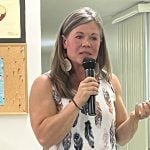Federal and provincial governments confess there are a number of faults
in the current maze of safety net programs.
They say there is a lack of cohesiveness and consistency between all
the programs, which they hope to address in a new comprehensive
agriculture policy.
Agriculture Canada highlighted some of those shortcomings in a document
that spells out the new agricultural policy framework agreed to by the
country’s agriculture ministers last June.
It says governments have created conditions that encourage selective
Read Also

Alberta may eliminate marked fuel
Alberta may soon stop selling dyed gasoline and diesel.
use of programs, such as a farmer who uses crop insurance one year and
not the next.
There is a lack of effective linkages among the various programs. For
example, producers receive a payment under the Canadian Farm Income
Program, or CFIP, regardless of whether they participated in crop
insurance or made use of their Net Income Stabilization Accounts, or
NISA.
The design of NISA is flawed because it
doesn’t encourage producers to take a more active role in managing
their risk. The three-percent interest premium on NISA balances may
inadvertently be encouraging farmers to leave their money in the
accounts during times of need.
The document also points out that safety nets could encourage producers
to use private risk management tools such as hedging and forward
contracting and that CFIP does not extend to cover the risk of
operating losses or negative margins.
The report also said that while government programs or private
insurance cover most forms of asset loss, there is no “business
interruption” coverage for the time it takes to replace those assets
and start earning income again.
One farm group had a few additions to the government list. Darrin
Qualman, executive director of the National Farmers Union, said
underfunding should be included as a shortcoming.
He also said the whole premise of basing program payments on a certain
percentage of average yields or gross margins is flawed thinking.
“If you think you’re in the midst of a farm crisis where a normal,
average yield and a normal, average price isn’t going to keep farmers
on the land, then guaranteeing them 70 percent of that isn’t going to
keep them on the land.”
Qualman said the underlying assumption that market returns on an
average year are adequate, and that governments only need to step in
every third or fourth year when there is some kind of disaster, is
wrong.















